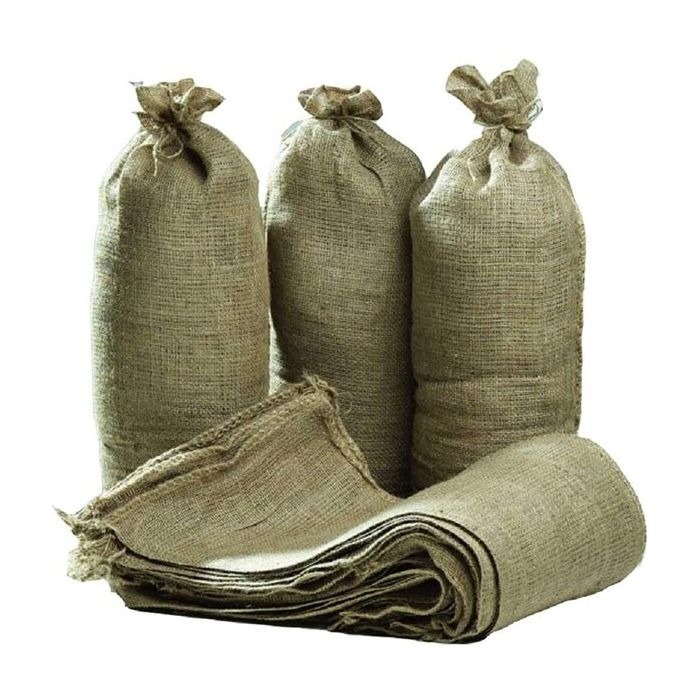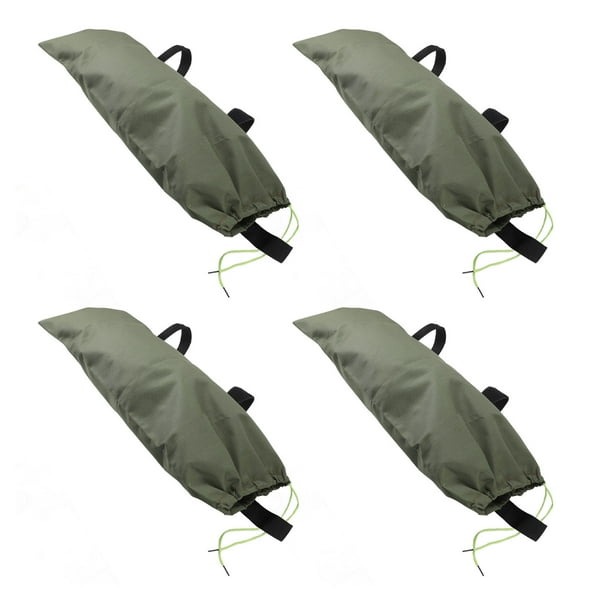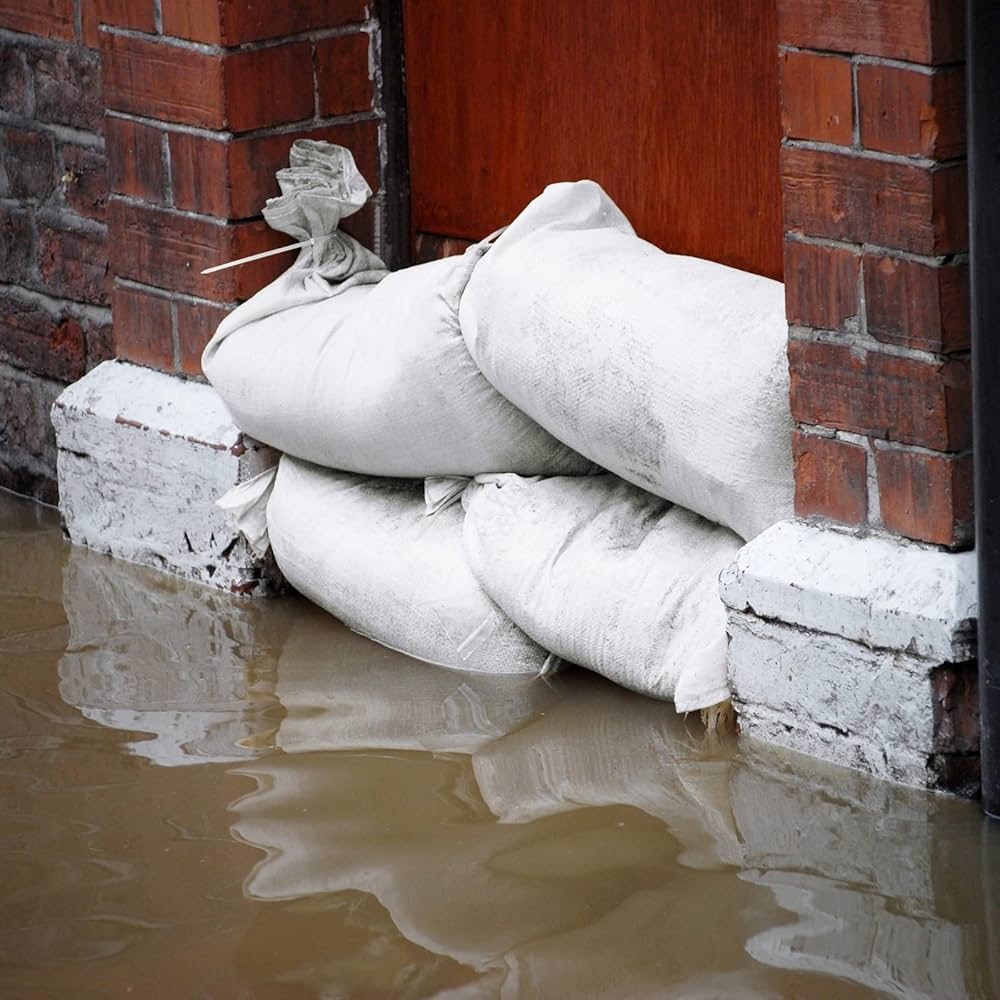Benefits of Sandbagging Against Floods
When floods threaten, protecting your home is crucial. Here’s why sandbagging your doorway can help:
Cost-Effectiveness
Sandbags are an economical option for flood defense. They need only sand and bags, making them much cheaper than permanent flood barriers.
Simplicity of Implementation
Learning how to sandbag a doorway is straightforward. You can easily stack sandbags without specialized tools or skills.
Flexibility
You can place sandbags in various configurations. This allows you to adapt to your home’s specific needs and the flood’s severity.
Temporary Nature
Sandbags are perfect for temporary use. After the flood, you can remove them, returning your property to its original state.
Accessibility
Materials for sandbagging a doorway are usually easy to find. Many local authorities provide sandbags during flood alerts.
Each of these benefits makes sandbagging a doorway a viable option for emergency flood defense. It’s a method proven to be effective, especially when you follow proper guidelines for placement and maintenance.
Essential Supplies for Sandbagging Your Doorway

Before you begin the process of how to sandbag a doorway, you must gather the right materials. These supplies are crucial for creating an effective barrier against rising floodwaters. Keep the following items on hand:
Sandbags
Choose durable sandbags made for flood control. Make sure you have enough to build your barrier.
Sand or Soil
You will need a substantial amount of sand or soil to fill the bags. It’s the weight that provides the barrier.
Shovels
Shovels are essential for filling the sandbags. One with a pointed blade works best.
Gloves
Wear heavy-duty gloves to protect your hands while handling the bags and shovels.
Water Source
Keep a hose or buckets of water nearby. You’ll need it to dampen the sand, which increases the barrier’s effectiveness.
Plastic Sheeting
This will act as an additional barrier to water. Place it in between the layers of sandbags.
Tie Strings
If the sandbags do not have built-in ties, you will need durable strings to tie them shut after filling.
Gathering these supplies before a flood hits will ensure you’re ready to act fast when you need to sandbag a doorway. Make sure to store them in an accessible location. Using clear labels helps you find them quickly in an emergency.
Step-by-Step Guide to Sandbagging a Doorway
Laying down sandbags correctly is key to keeping floods at bay. Follow this guide to do it right:
Step 1: Prepare the Area
Clear debris and obstacles from the doorway. Ensure the ground is level for the bags.
Step 2: Lay the Plastic Sheeting
Spread the sheeting over the area. This barrier blocks seeping water.
Step 3: Fill Sandbags
Fill bags to two-thirds. Overfilling makes them less stable.
Step 4: Stack the Sandbags
Place bags tightly together to form a wall. The first layer is the foundation.
Step 5: Stagger the Layers
Stack bags like bricks. Each layer should overlap the one below.
Step 6: Tamp the Bags
Push bags down firmly. This removes air and ensures a snug fit.
Step 7: Seal the Top Layer
Place sheeting over the top layer. This adds extra protection.
By following these steps, you create a solid defense against flooding. Remember to keep the ‘how to sandbag a doorway’ tips in mind for efficiency and safety.
Tips for Proper Sandbag Placement
To ensure your sandbag barrier holds up against floodwaters, proper placement is key. Here are some tips to get it right:
Choose the Right Surface
Start on a flat, stable surface. Remove any objects that could puncture the bags.
Arrange Bags Snugly
Place the bags close together. They should touch with no gaps in between.
Stack with Care
Angle the bags against the door. This directs water away from your home.
Check the Bag Placement
After stacking, look for potential leaks. Adjust the bags if you find any.
Create a Sloping Wall
The barrier should slope away from your doorway. This helps divert the water’s flow.
By following these tips, your sandbag barrier will be more efficient in safeguarding your home against floods. Remember: take your time to position each bag carefully; rushed work may compromise the barrier’s integrity.
Enhancing Doorway Flood Defense Beyond Sandbags

While sandbags are a great start, boosting your doorway’s flood defense is possible with additional measures. Here are some ways to enhance protection:
Install Flood Barriers
Consider permanent flood barriers for added security. These barriers can be steel, aluminum or plastic flood gates. They create a strong seal and are easy to deploy.
Apply Waterproof Sealants
Use waterproof sealants around your door frame. This helps prevent water from seeping through tiny cracks.
Elevate Electrical Outlets
Move outlets higher up the wall. This step can prevent electrical damage in case of water intrusion.
Use Absorbent Flood Sacks
Deploy absorbent flood sacks in addition to sandbags. These swell when wet, creating a tight barrier against water.
Anchor Fuel Tanks
Secure fuel tanks to avoid spills. Spilled fuel during floods can be hazardous.
Enhance your doorway’s defenses to keep your home safer from flood damage. Each step you take can potentially save on costly repairs later.
Maintaining Your Sandbag Barrier
Maintaining your sandbag barrier is essential for maximum efficiency. Regular checks are crucial, especially during lengthy flood threats. Here are vital tips:
Inspect the Barrier Regularly
Check your sandbag barrier frequently for signs of wear or damage. Look for tears, leaks, or bags that might have shifted out of place. Early detection of these issues allows for timely repairs.
Ensure the Top Layer is Secure
Make sure the top layer of sandbags is well sealed with plastic sheeting. This prevents water from seeping through the barrier. Replace the sheeting if it gets damaged.
Replace Wet or Damaged Sandbags
Wet or damaged sandbags can weaken the barrier. Swap them out for new ones if they become soaked or show signs of deterioration.
Keep Drainage Clear
Ensure that the area around the sandbag barrier is free from debris that can block water flow. Proper drainage is key to avoid water build-up against the sandbags.
Monitor Water Levels
Keep an eye on water levels near your barrier. If water levels rise, you may need to add more layers of sandbags for heightened protection.
By attentively maintaining your sandbag barrier, you can better safeguard your home from flood damage. Remember, the effectiveness of your ‘how to sandbag a doorway’ efforts depends on both proper placement and diligent maintenance.
Safety Considerations When Sandbagging
When learning how to sandbag a doorway, safety should never be sidelined. Here’s what to focus on:
Wear Protective Gear
Always wear gloves to shield your hands from sharp objects and friction. Sturdy boots protect your feet from water and heavy bags.
Lift Properly
Use your legs, not your back, to lift heavy sandbags. Keep your back straight and bend at the knees.
Work in Teams
Sandbagging is labor-intensive. Work with others to share the load and prevent injuries.
Stay Hydrated
Drink plenty of water, especially in hot weather. Dehydration can be a silent hazard.
Take Breaks
Don’t overwork yourself. Take regular breaks to recover and maintain alertness.
Be Aware of Surroundings
Pay attention to rising water levels and weather updates. Don’t get trapped by sudden changes.
Plan for Emergencies
Know the quickest route to higher ground. Have an emergency kit ready in case you must evacuate.
Sanitize After Handling
Wash your hands after working with sandbags. Floodwaters can carry harmful bacteria.
By observing these precautions, you can minimize risks during the sandbagging process. Keep these safety tips in mind to protect yourself and others as you learn how to sandbag a doorway effectively.
Disposal and Cleanup After the Flood Waters Recede

Once floodwaters begin to recede, it’s important to address the disposal and cleanup of your sandbag barrier. Proper cleanup is crucial for environmental safety and preparing for future floods. Here are steps to follow:
Assess the Sandbags for Contamination
Check if floodwaters have contaminated the sandbags. Dispose of contaminated bags according to local guidelines.
Remove Sandbags Carefully
Lift and remove sandbags without rushing. This ensures the area remains stable and prevents further damage.
Sort Reusable Sandbags from Damaged Ones
Separate intact sandbags from those with wear or damage. Reuse the good ones for future needs.
Dispose of Damaged Sandbags Properly
Follow local regulations for disposing of damaged bags. Do not simply toss them in your regular trash.
Clean the Affected Area
Wash and disinfect areas that the sandbags protected. Remember to wear protective gear during cleanup.
Plan for Sandbag Storage or Disposal
Decide if you will store sandbags for future use or discard them. Store bags in a dry, protected place if keeping them.
Cleaning up after a flood is as important as preparing for one. After you learn how to sandbag a doorway, also learn how to handle sandbags post-flood. By properly disposing of or storing sandbags, you help safeguard the environment and prepare for the next flood event.

